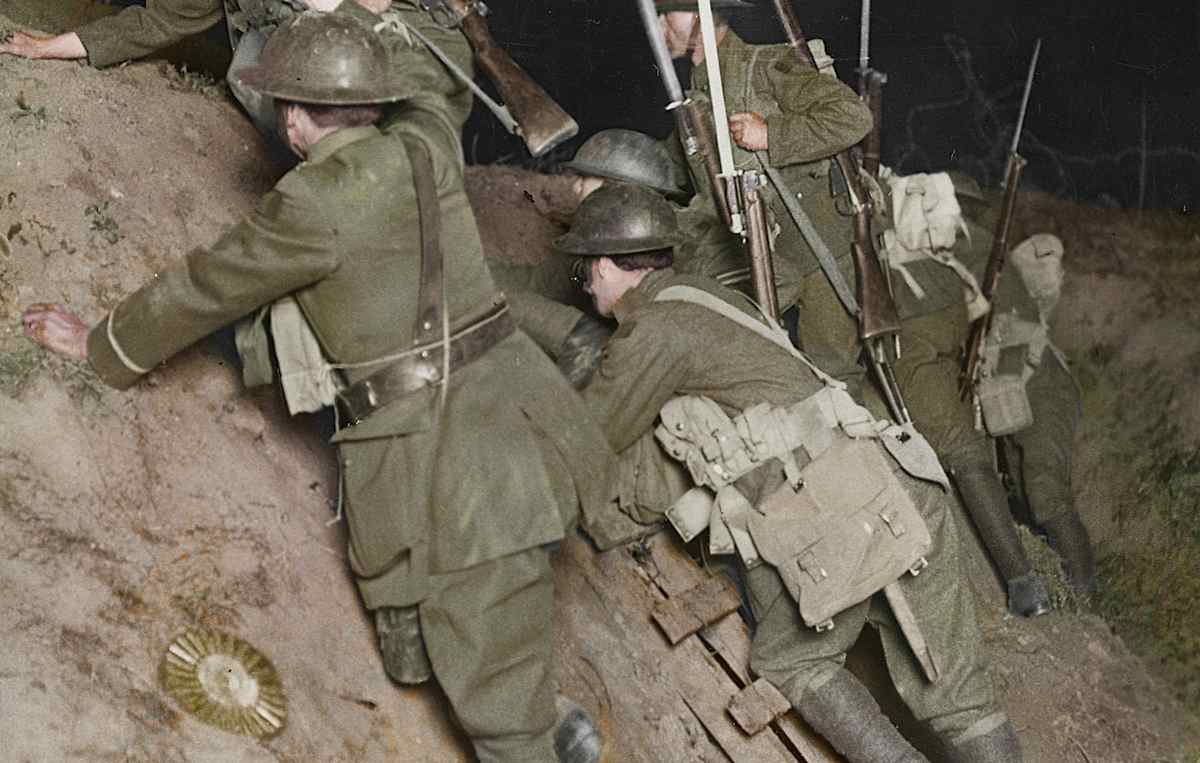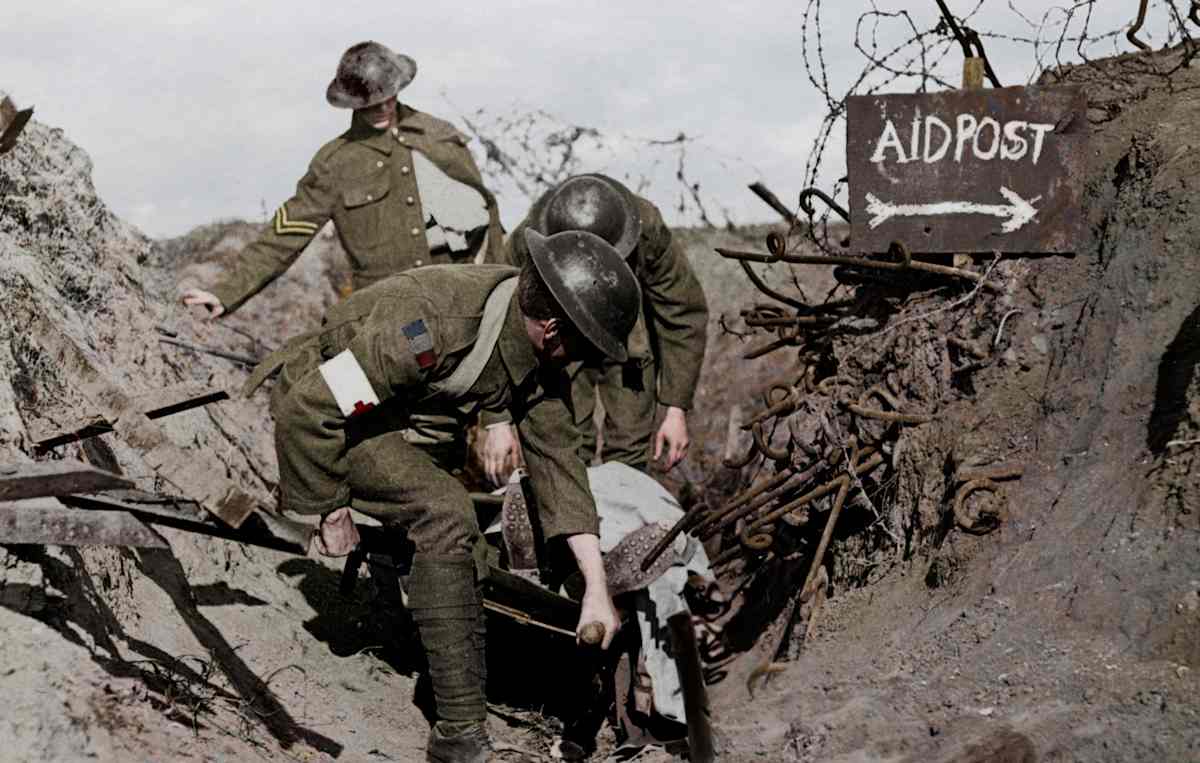With World War I having effectively settled into a stalemate in Europe, the Allies attempted to score a victory against the Ottoman Empire, which entered the conflict on the side of the Central Powers in late 1914.
After a failed attack on the Dardanelles (the strait linking the Sea of Marmara with the Aegean Sea), Allied forces led by Britain launched a large-scale land invasion of the Gallipoli Peninsula in April 1915. The invasion also proved a dismal failure, and in January 1916 Allied forces staged a full retreat from the shores of the peninsula after suffering 250,000 casualties.
Did you know?
The young Winston Churchill, then first lord of the British Admiralty, resigned his command after the failed Gallipoli campaign in 1916, accepting a commission with an infantry battalion in France.
British-led forces also combated the Ottoman Turks in Egypt and Mesopotamia, while in northern Italy, Austrian and Italian troops faced off in a series of 12 battles along the Isonzo River, located at the border between the two nations.
Battle of the Isonzo
The First Battle of the Isonzo took place in the late spring of 1915, soon after Italy’s entrance into the war on the Allied side. In the Twelfth Battle of the Isonzo, also known as the Battle of Caporetto (October 1917), German reinforcements helped Austria-Hungary win a decisive victory.
After Caporetto, Italy’s allies jumped in to offer increased assistance. British and French—and later, American—troops arrived in the region, and the Allies began to take back the Italian Front.
World War I at Sea
In the years before World War I, the superiority of Britain’s Royal Navy was unchallenged by any other nation’s fleet, but the Imperial German Navy had made substantial strides in closing the gap between the two naval powers. Germany’s strength on the high seas was also aided by its lethal fleet of U-boat submarines.
After the Battle of Dogger Bank in January 1915, in which the British mounted a surprise attack on German ships in the North Sea, the German navy chose not to confront Britain’s mighty Royal Navy in a major battle for more than a year, preferring to rest the bulk of its naval strategy on its U-boats.
The biggest naval engagement of World War I, the Battle of Jutland (May 1916) left British naval superiority on the North Sea intact, and Germany would make no further attempts to break an Allied naval blockade for the remainder of the war.
World War I Planes
World War I was the first major conflict to harness the power of planes. Though not as impactful as the British Royal Navy or Germany’s U-boats, the use of planes in World War I presaged their later, pivotal role in military conflicts around the globe.
At the dawn of World War I, aviation was a relatively new field; the Wright brothers took their first sustained flight just eleven years before, in 1903. Aircraft were initially used primarily for reconnaissance missions. During the First Battle of the Marne, information passed from pilots allowed the allies to exploit weak spots in the German lines, helping the Allies to push Germany out of France.
The first machine guns were successfully mounted on planes in June of 1912 in the United States, but were imperfect; if timed incorrectly, a bullet could easily destroy the propeller of the plane it came from. The Morane-Saulnier L, a French plane, provided a solution: The propeller was armored with deflector wedges that prevented bullets from hitting it. The Morane-Saulnier Type L was used by the French, the British Royal Flying Corps (part of the Army), the British Royal Navy Air Service and the Imperial Russian Air Service. The British Bristol Type 22 was another popular model used for both reconnaissance work and as a fighter plane.
Dutch inventor Anthony Fokker improved upon the French deflector system in 1915. His “interrupter” synchronized the firing of the guns with the plane’s propeller to avoid collisions. Though his most popular plane during WWI was the single-seat Fokker Eindecker, Fokker created over 40 kinds of airplanes for the Germans.
The Allies debuted the Handley-Page HP O/400, the first two-engine bomber, in 1915. As aerial technology progressed, long-range heavy bombers like Germany’s Gotha G.V. (first introduced in 1917) were used to strike cities like London. Their speed and maneuverability proved to be far deadlier than Germany’s earlier Zeppelin raids.
By the war’s end, the Allies were producing five times more aircraft than the Germans. On April 1, 1918, the British created the Royal Air Force, or RAF, the first air force to be a separate military branch independent from the navy or army.
Second Battle of the Marne
With Germany able to build up its strength on the Western Front after the armistice with Russia, Allied troops struggled to hold off another German offensive until promised reinforcements from the United States were able to arrive.
On July 15, 1918, German troops launched what would become the last German offensive of the war, attacking French forces (joined by 85,000 American troops as well as some of the British Expeditionary Force) in the Second Battle of the Marne. The Allies successfully pushed back the German offensive and launched their own counteroffensive just three days later.
After suffering massive casualties, Germany was forced to call off a planned offensive further north, in the Flanders region stretching between France and Belgium, which was envisioned as Germany’s best hope of victory.
The Second Battle of the Marne turned the tide of war decisively towards the Allies, who were able to regain much of France and Belgium in the months that followed.
The Harlem Hellfighters and Other All-Black Regiments
By the time World War I began, there were four all-Black regiments in the U.S. military: the 24th and 25th Infantry and the 9th and 10th Cavalry. All four regiments comprised of celebrated soldiers who fought in the Spanish-American War and American-Indian Wars, and served in the American territories. But they were not deployed for overseas combat in World War I.






































































